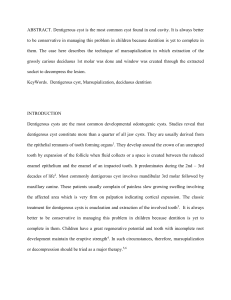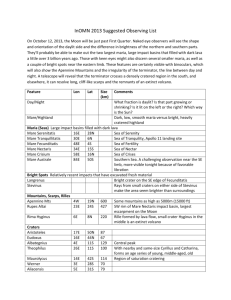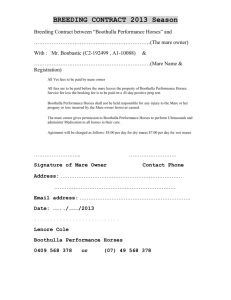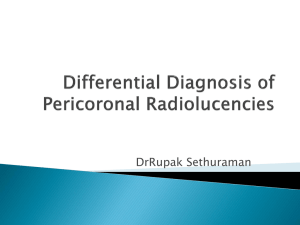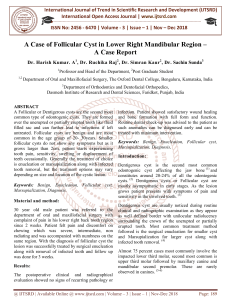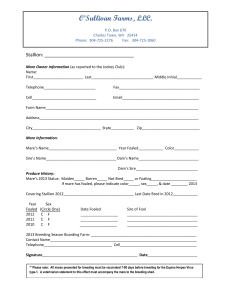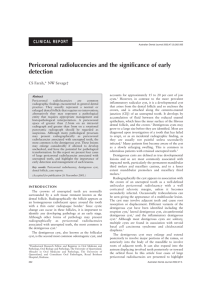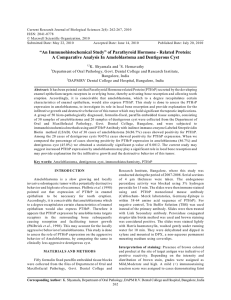Jennifer Ruby summary 2014
advertisement
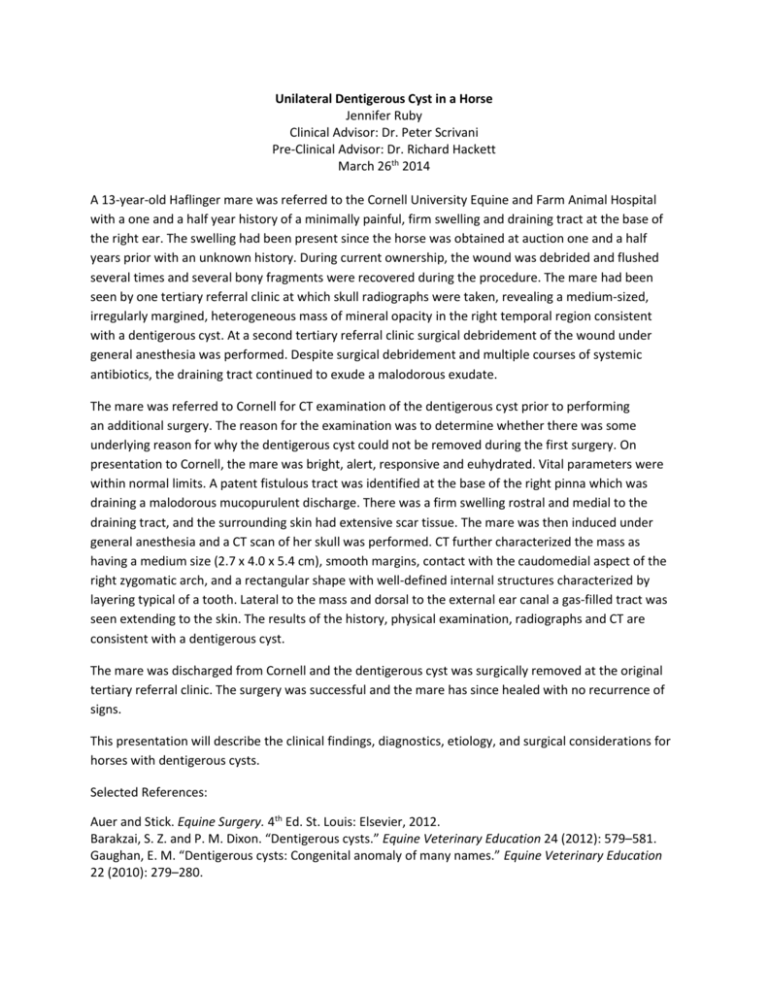
Unilateral Dentigerous Cyst in a Horse Jennifer Ruby Clinical Advisor: Dr. Peter Scrivani Pre-Clinical Advisor: Dr. Richard Hackett March 26th 2014 A 13-year-old Haflinger mare was referred to the Cornell University Equine and Farm Animal Hospital with a one and a half year history of a minimally painful, firm swelling and draining tract at the base of the right ear. The swelling had been present since the horse was obtained at auction one and a half years prior with an unknown history. During current ownership, the wound was debrided and flushed several times and several bony fragments were recovered during the procedure. The mare had been seen by one tertiary referral clinic at which skull radiographs were taken, revealing a medium-sized, irregularly margined, heterogeneous mass of mineral opacity in the right temporal region consistent with a dentigerous cyst. At a second tertiary referral clinic surgical debridement of the wound under general anesthesia was performed. Despite surgical debridement and multiple courses of systemic antibiotics, the draining tract continued to exude a malodorous exudate. The mare was referred to Cornell for CT examination of the dentigerous cyst prior to performing an additional surgery. The reason for the examination was to determine whether there was some underlying reason for why the dentigerous cyst could not be removed during the first surgery. On presentation to Cornell, the mare was bright, alert, responsive and euhydrated. Vital parameters were within normal limits. A patent fistulous tract was identified at the base of the right pinna which was draining a malodorous mucopurulent discharge. There was a firm swelling rostral and medial to the draining tract, and the surrounding skin had extensive scar tissue. The mare was then induced under general anesthesia and a CT scan of her skull was performed. CT further characterized the mass as having a medium size (2.7 x 4.0 x 5.4 cm), smooth margins, contact with the caudomedial aspect of the right zygomatic arch, and a rectangular shape with well-defined internal structures characterized by layering typical of a tooth. Lateral to the mass and dorsal to the external ear canal a gas-filled tract was seen extending to the skin. The results of the history, physical examination, radiographs and CT are consistent with a dentigerous cyst. The mare was discharged from Cornell and the dentigerous cyst was surgically removed at the original tertiary referral clinic. The surgery was successful and the mare has since healed with no recurrence of signs. This presentation will describe the clinical findings, diagnostics, etiology, and surgical considerations for horses with dentigerous cysts. Selected References: Auer and Stick. Equine Surgery. 4th Ed. St. Louis: Elsevier, 2012. Barakzai, S. Z. and P. M. Dixon. “Dentigerous cysts.” Equine Veterinary Education 24 (2012): 579–581. Gaughan, E. M. “Dentigerous cysts: Congenital anomaly of many names.” Equine Veterinary Education 22 (2010): 279–280.
